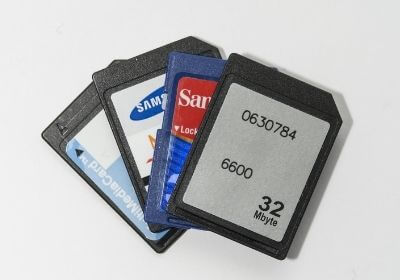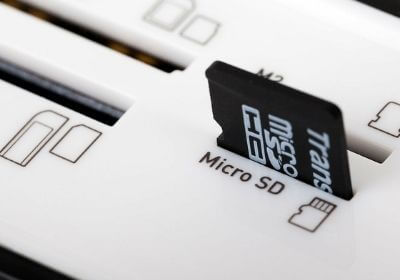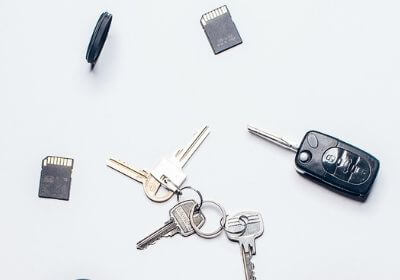
Clear an SD card - how to properly format an SD card without losing any data!
Contents
- What formatting for SD card?
- Why should I format an SD card?
- How can I format my SD card?
- How do I format without losing data?
- Are there any differences in formatting between Android and Mac devices?
- Can I undo the formatting of an SD card?
- When should I start using a new SD card?
- What to do if formatting does not work?
- What does "can't write to SD Card" mean?
- How can I unlock my SD card protection?
- Conclusion
If an SD card is to be formatted, various formats are available for this. Besides FAT32 and exFAT, NTFS is also possible. Whenever a new SD card is to be used, it must first be formatted. This formatting determines which structure the data medium will use to store and manage the data. The formatting specifies how and in what way the respective data is stored on the SD card. Usually, the FAT32 format is mainly used for formatting an SD card today, this is also the oldest format. exFAT and NTFS are newer data formats.
Most commonly, formatting is used when a device is sold along with the SD card, such as a cell phone. Formatting removes the data that is on the card. Even when a new SD card is purchased, it usually needs to be formatted before it can be used. If formatting is not done, the SD card may not be recognized by the cell phone, laptop or tablet. Then it is necessary to convert the file format to the appropriate one. Errors on a data medium can also be corrected in this way under certain circumstances.

There are various options available for formatting an SD card. The easiest way is formatting directly via the device that uses the card, but alternatively it is also possible to format an SD card via the Computer or the so-called SD Formatter.
Formatting SD card via the device (How To)
To format an SD card via the device, the following procedure should be followed:
- First, you need to open the settings, in the "Device" section you should find the "Memory" option.
- Tap the SD card there.
- Then select "Memory settings".
- Now just tap on "Format", usually this option has to be confirmed once again.
The names of the various menu items and options may differ, depending on the device.
Format SD card via compuer (How To)
Formatting the SD card is also possible via computer (Windows or Mac). Insert the SD cart into the card reader slot of the computer. If the computer does not have such a slot, an external card reader can also be used. This is how it works:
Windows 10
- First open the Windows Explorer.
- Under "This Computer", the SD card appears as a removable disk drive.
- Right-click on the map and select "Format" from the context menu.
- Now the desired file system must be specified. Once the selection has been made, formatting is initiated via "Start".
macOS
- On a PC with this operating system, the Finder must be opened. Then search for the "Disk Utility". It is also possible to call this program via "Utilities".
- "Launch Disk Utility", then click on the SD card.
- Select the "Delete" tab and specify the desired format and the name of the memory card. After that click on "Delete".
Format SD card using SD Formatter (How To)
Formatting via the so-called SD Formatter is also possible. The SD Formatter is a program that is free of charge and can be used for almost all operating systems. The use of this program is recommended if the Computer does not recognize the card.
- The first thing to do is to download and install the SD-Formatter program.
- Then insert the SD card into the card reader slot or the card reader of the Computer.
- Start the SD Formatter. Now the information about the SD card is displayed.
- Select the desired formatting type under "Options". The options are "Full (Erase)" or "Full (OverWrite)". Confirm the selection with OK.
- Click on "Format" and the formatting will be started.

It may well happen that data that is on an SD card simply cannot be copied and saved. Formatting to a different file format can solve this problem. In that case the formatting must be done without data loss. Formatting without data loss is only possible if the file system is changed to NTFS format. A conversion to NTFS format is done like this:
- Enter the command "cmd" in the Windows search bar.
- Right-click on "Command Prompt", select "Run as Administrator" in the context menu. This will start the command line.
- Now enter the following command: convert [letter of your drive]: /FS:NTFS and confirm with the Enter key.
- Now the SD card will be converted to NTFS format. The data stored on it will be preserved.
Of course, formatting an SD card on an Android device is done differently than on a Mac device. The easiest method is certainly to format the SD card via Android. The card does not have to be removed from the device for this an no memory card reader is required. If the formatting is done via a Mac device, a card reader is needed, the card has to be taken out of the device and then formatted on the Mac.
This depends on whether new data has already been saved on the SD card. When an SD card is formatted, the data on it is not permanently deleted, only the table of contents is removed. This means the data is still in the data area. If no new data has been saved yet, it is possible to undo the formatting. If new data has been saved on the card after formatting, the old data has been overwritten and is no longer available. If an SD card was accidentally deleted, it is best not to use the device to prevent the data from being overwritten. It is then possible to recover the data. Data recovery software can be used for this.

If the SD card has a defect and this can no longer be solved by formatting, it is time for a new one. It is recommended to buy a new SD card if the storage capacity is no longer enough or if the data has to be stored on the card permanently.

It can happen that a formatting does not work as desired. This can have different causes. Possibly the card is write-protected or there is a problem with the software. Most of the time, the error can be found in the file system of the SD card. Usually, however, these problems can be fixed.
File protection by lock switch
Modern SD cards are equipped with a lock switch, for example, which is a small slider located on the edge of the card. If this slider is set to "Lock" or to a small symbol that represents a lock, it is not possible to edit the card because write protection is active. This problem can be solved by moving the slider to the other side.
Software error
A software error on the card can be found using the Windows diagnostic tool. This error can also be repaired immediately. This is how it works:
- Open Windows Explorer and click on "This PC".
- Right-click on the SD card, select "Properties".
- In the window that opens, click "Scan" in the "Tools" tab and confirm with the "Scan and repair drive" option.
Now a check of the SD card is performed, after which the card is repaired so that it can be formatted without any problems afterwards.
It means just that, in which case it is not possible to write data to the SD card. The SD card is write-protected and is in the so-called read-only mode. In that case, data can be viewed, but it is not possible to change or delete it. This prevents files from being accidentally deleted or overwritten. There are several scenarios that can lead to this. For example, it is possible that the write-protection switch has been moved. However, write protection can also be set manually in the properties. The worst case scenario is that the file system of the SD card has been damaged or hacked by a virus. By removing the write protection, it is possible to save new data and change or delete existing files again.
If the write protection is of a physical nature in the form of a lock switch on the card, it only needs to be moved to "Unlock".
If the SD card is used on the PC, it is also possible that it has been write-protected by the operating system. In this case, write authorization must be granted again.
- Open Windows Explorer and select the SD card with the right mouse button under "This PC".
- In the "Settings" select the "Security" tab and click on "Advanced".
- First open "Change Permission", then double-click to open the permission entry.
- Check the "Full access" box and confirm the entries.
If this does not work, the tool diskpart.exe can also be used. For this, the SD card must be connected to the PC.
- In the "Run" dialog enter the command "diskpart".
- Use the command "list disk" to display all available disks, use "select disc" to select the SD card.
- The protection of the card can be removed by using the "disk clear readonly" command.
If the write protection still exists, you can try to fix the problem using the Registry Editor.
- In the "Run" dialog, enter the command "regedit", this will open the Windows Registry.
- Go to the entry "HKEY_LOCAL_MACHINE -> System -> CurrentControlSet" and then right-click on "Control".
- Click on the folder "StorageDevicePolicies" and look for the entry "WriteProtect" on the right.
- Double click on this entry and change the value to "0". Under the item "Base" the value "Hexadecimal" should also be activated.
It's actually quite easy to format SD Cards. Whether you want to erase the SD card to pass it on or you just want to free up space, formatting is really quite simple. With just a few steps, you remove your data from the card and it's ready to accept new data again. Follow the steps and rest assured that your data will no longer be accessible.
